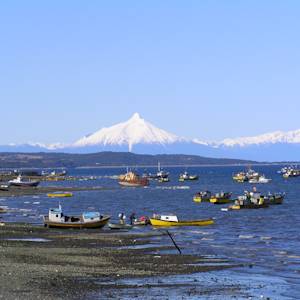KAZA Transfrontier Conservation Area
2006 CE • Zambia, Botswana, Namibia, Zimbabwe, and Angola
"The Kavango Zambezi (KAZA) Transfrontier Conservation Area (TFCA) is situated in the Kavango and Zambezi river basins where the borders of Angola, Botswana, Namibia, Zambia and Zimbabwe converge . . . It spans an area of approximately 520,000 km2 and includes 36 proclaimed protected areas. The KAZA TFCA countries support over 200,000 elephants, most of which are found south of the Zambezi River. Due to human activities, the KAZA TFCA faces habitat fragmentation and loss of connectivity. Protected areas could become isolated ecological islands, leading to reduced biodiversity and blocked elephant movement." The key threats to the area are "the deforestation of the area to create fields for agriculture and for making charcoal; uncontrolled settlements along main roads and watercourses, which cause fragmentation of the landscape; overgrazing of the area due to uncontrolled cattle numbers; over-exploitation of fish due to unsustainable fishing practices; and uncontrolled fires in the Simalaha floodplain wetland ecosystem. A key objective of the KAZA TFCA is to form a transboundary ecological network to ensure connectivity between key protected wildlife areas and, where necessary, reconnect isolated wildlife areas."
Lesa van Rooyen, "Connectivity conservation in the Kavango Zambezi Transfrontier Conservation Area: The Zambezi-Chobe Floodplain Wildlife Dispersal Area," Conservation Corridor.
Image: Someone35, CC BY-SA 3.0, via Wikimedia Commons


Learn about Maya Lin’s fifth and final memorial: a multi-platform science based artwork that presents an ecological history of our world - past, present, and future.

Discover ecological histories and stories of former abundance, loss, and recovery on the map of memory.

Learn how we can reduce our emissions and protect and restore species and habitats – around the world.

See how art can help us rethink the problems we face, and give us hope that each one of us can make a difference.

Help make a global memorial something personal and close to home. Share your stories of the natural world.


